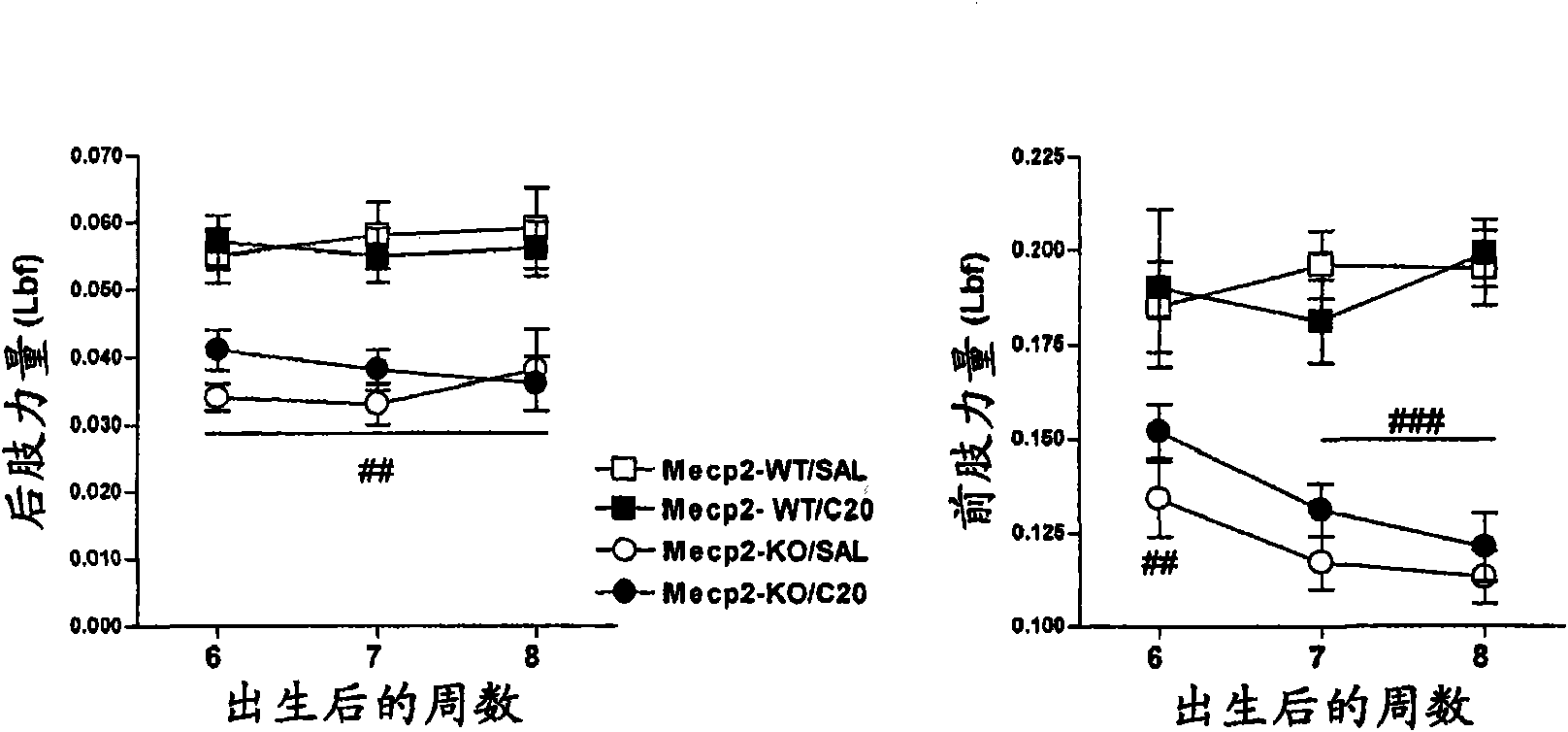Use of TrkB antibodies for the treatment of respiratory disorders
A technology for respiratory diseases and antibodies, applied in respiratory diseases, antibodies, anti-animal/human immunoglobulins, etc., can solve the problem of no effective treatment for diseases
- Summary
- Abstract
- Description
- Claims
- Application Information
AI Technical Summary
Problems solved by technology
Method used
Image
Examples
Embodiment 1
[0247] Example 1: Administration of TrkB agonist antibody (C20) to Mecp2 mice
[0248] TrkB agonist antibody (C20) or saline was administered intraperitoneally to Mecp2-KO and wild-type males aged 4 (early symptoms) to 8 weeks (late symptoms) at a dose of 3 mg / kg body weight twice weekly for animals Test for 6 to 8 weeks. 9-14 mice per group were tested for a total of four groups (wild type administered saline, wild type administered mAb, knockout animals administered saline and knockout animals administered mAb). Mecp2 knockout mice were purchased from Jackson Labs (strain Mecp2 tm1.1Bird / J(#003890)).
[0249] like Figure 1A As shown, mice exhibited decreased body weight when administered TrkB agonist mAb. The topmost line (white squares show data points) represents saline administered Mecp2 wild type mice. The second top line (black squares show data points) represents Mecp2 wild-type mice administered TrkB agonist antibody. The second bottom line (white circles sh...
Embodiment 2
[0256] Example 2: Administration of TrkB agonist antibody (C20) to Mecp2 mice
[0257] To test for apnea, whole body plethysmography can be performed using a system designed by Buxco Research Systems. Conscious, unrestrained mice were placed in a plethysmographic chamber (vertical Plexiglas cylinder, 4 inches in diameter and 5 inches in height). Maintain air flow to ensure a constant exchange of fresh air into the cavity, providing food, bedding and water. To accurately assess the frequency of apneas, mice need to acclimate to the plethysmographic chamber. Airway response recordings were performed at various intervals once they were fully acclimated, without removing the animals from the chamber. The acclimatization and recording periods should not exceed 2 h; therefore, mice will be in the chamber for no more than two hours at a time.
[0258] In the same mice, plethysmographic recordings were performed no more than twice a week. Once the plethysmographic recordings were ...
PUM
 Login to View More
Login to View More Abstract
Description
Claims
Application Information
 Login to View More
Login to View More - R&D
- Intellectual Property
- Life Sciences
- Materials
- Tech Scout
- Unparalleled Data Quality
- Higher Quality Content
- 60% Fewer Hallucinations
Browse by: Latest US Patents, China's latest patents, Technical Efficacy Thesaurus, Application Domain, Technology Topic, Popular Technical Reports.
© 2025 PatSnap. All rights reserved.Legal|Privacy policy|Modern Slavery Act Transparency Statement|Sitemap|About US| Contact US: help@patsnap.com



